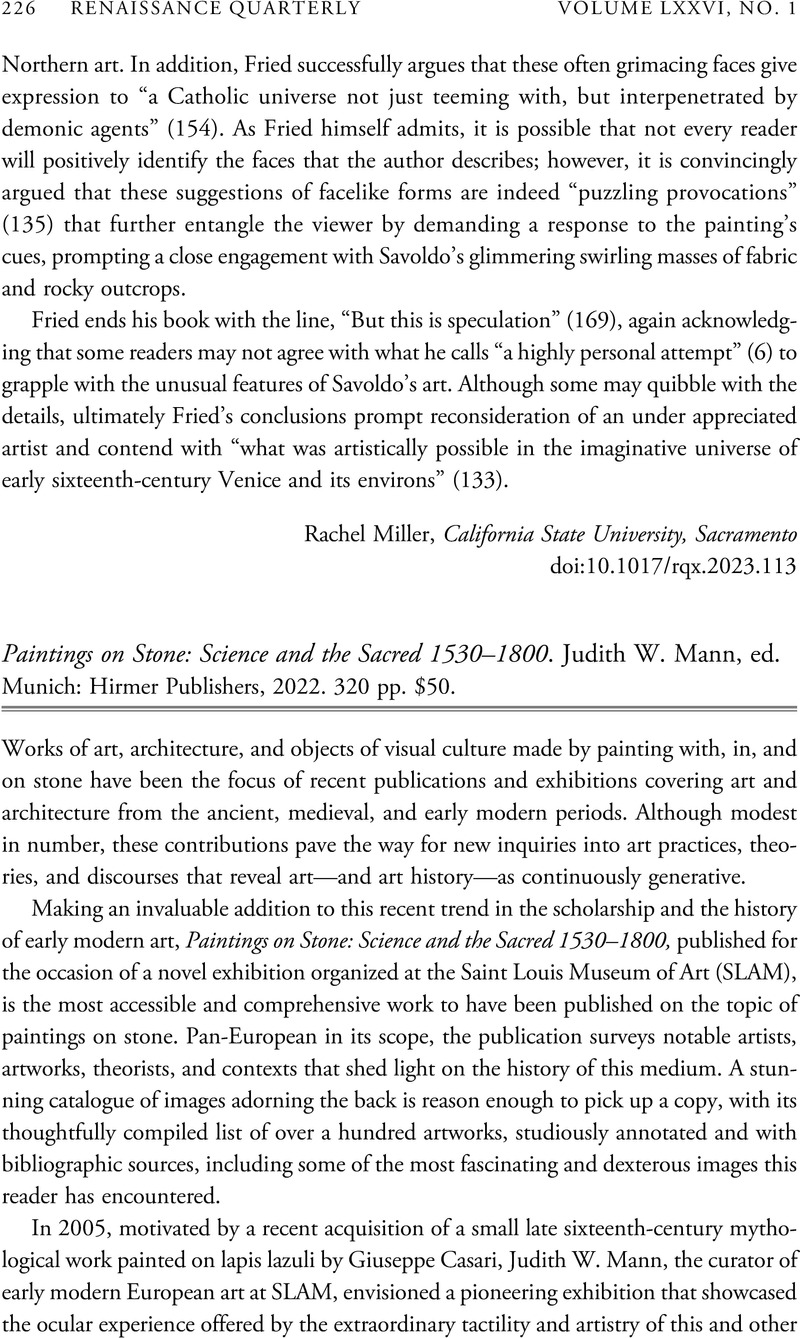No CrossRef data available.
Article contents
Paintings on Stone: Science and the Sacred 1530–1800. Judith W. Mann, ed. Munich: Hirmer Publishers, 2022. 320 pp. $50.
Review products
Paintings on Stone: Science and the Sacred 1530–1800. Judith W. Mann, ed. Munich: Hirmer Publishers, 2022. 320 pp. $50.
Published online by Cambridge University Press: 17 April 2023
Abstract
An abstract is not available for this content so a preview has been provided. Please use the Get access link above for information on how to access this content.

Information
- Type
- Review
- Information
- Copyright
- Copyright © The Author(s), 2023. Published by the Renaissance Society of America


